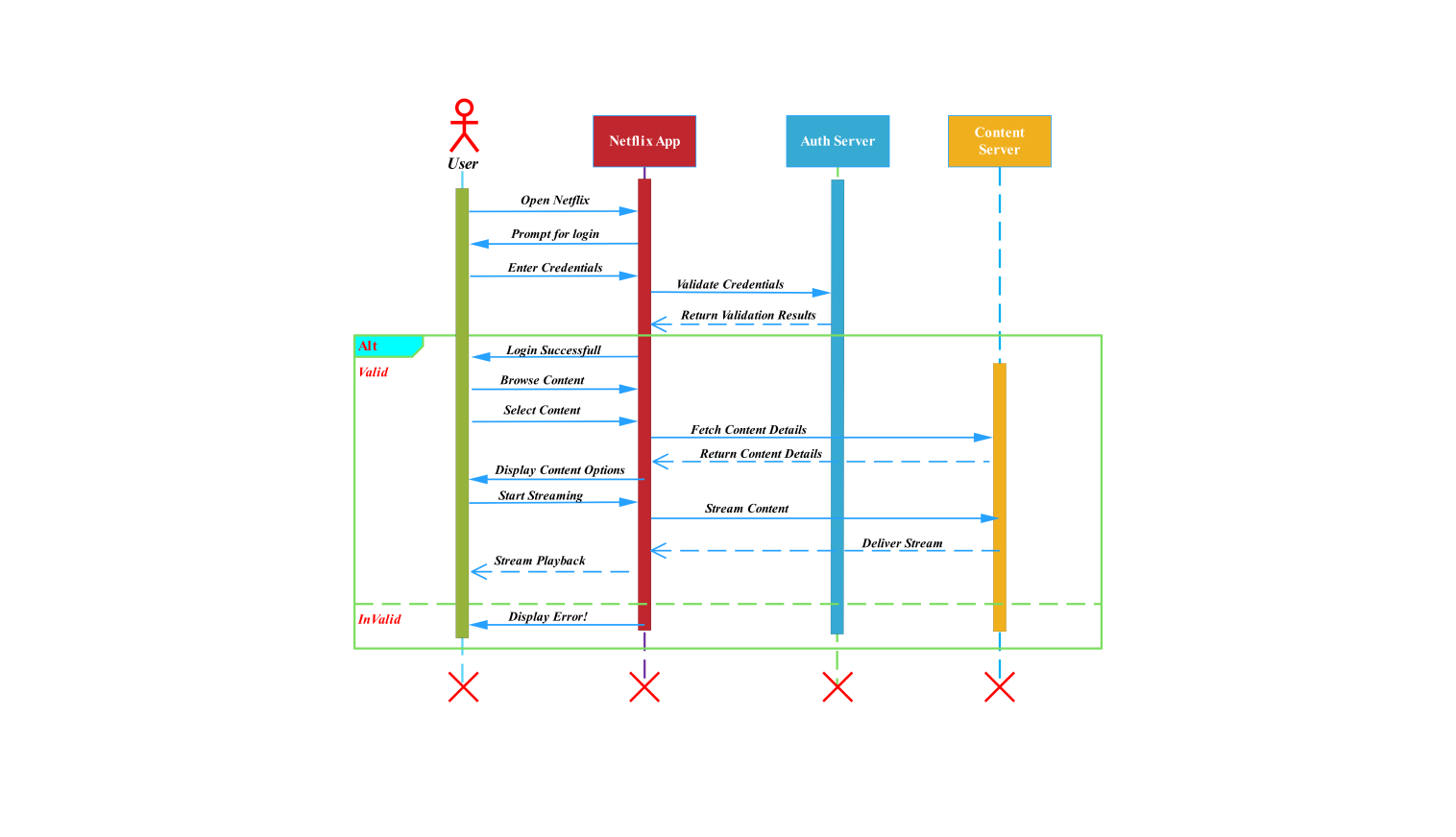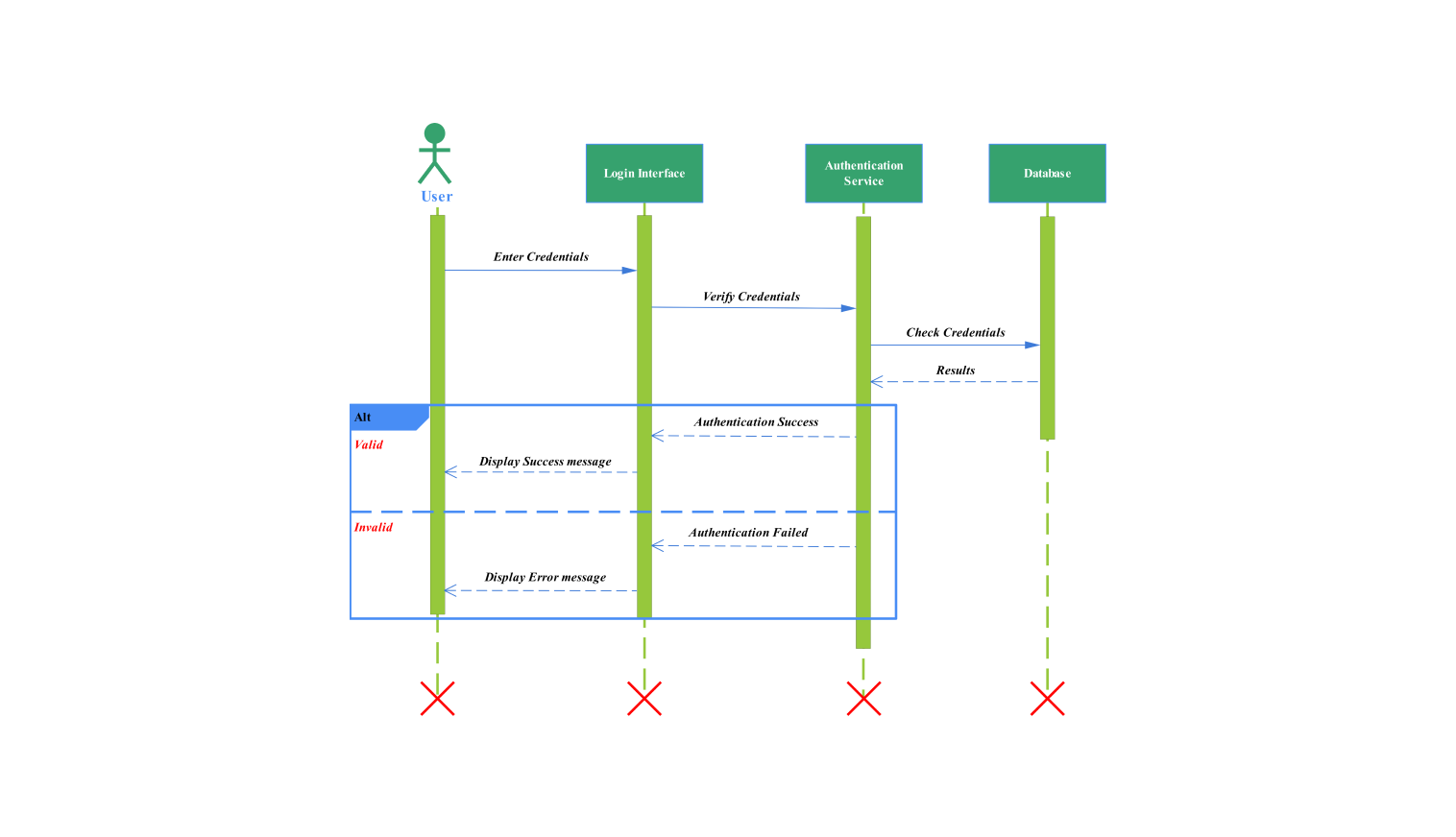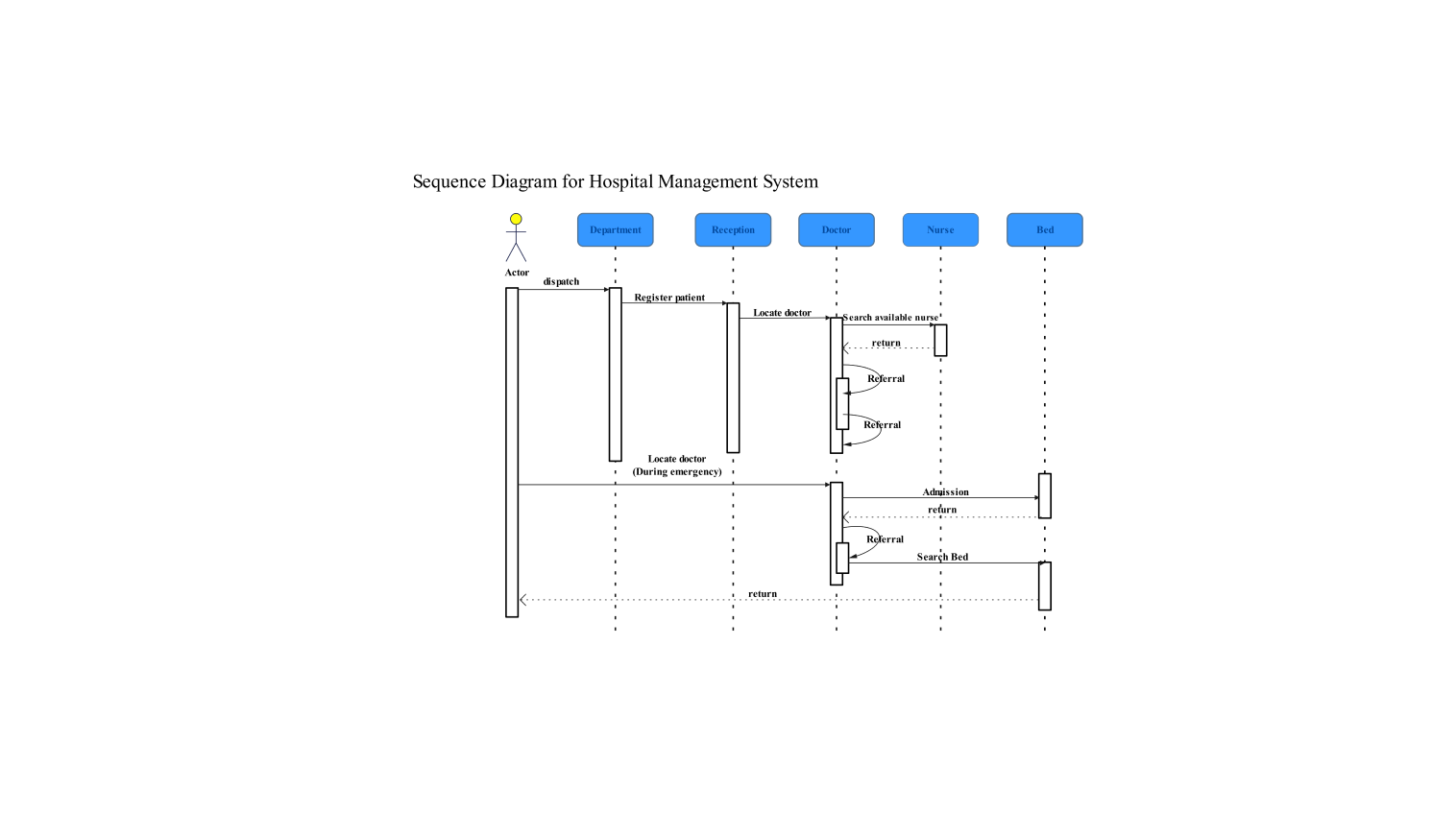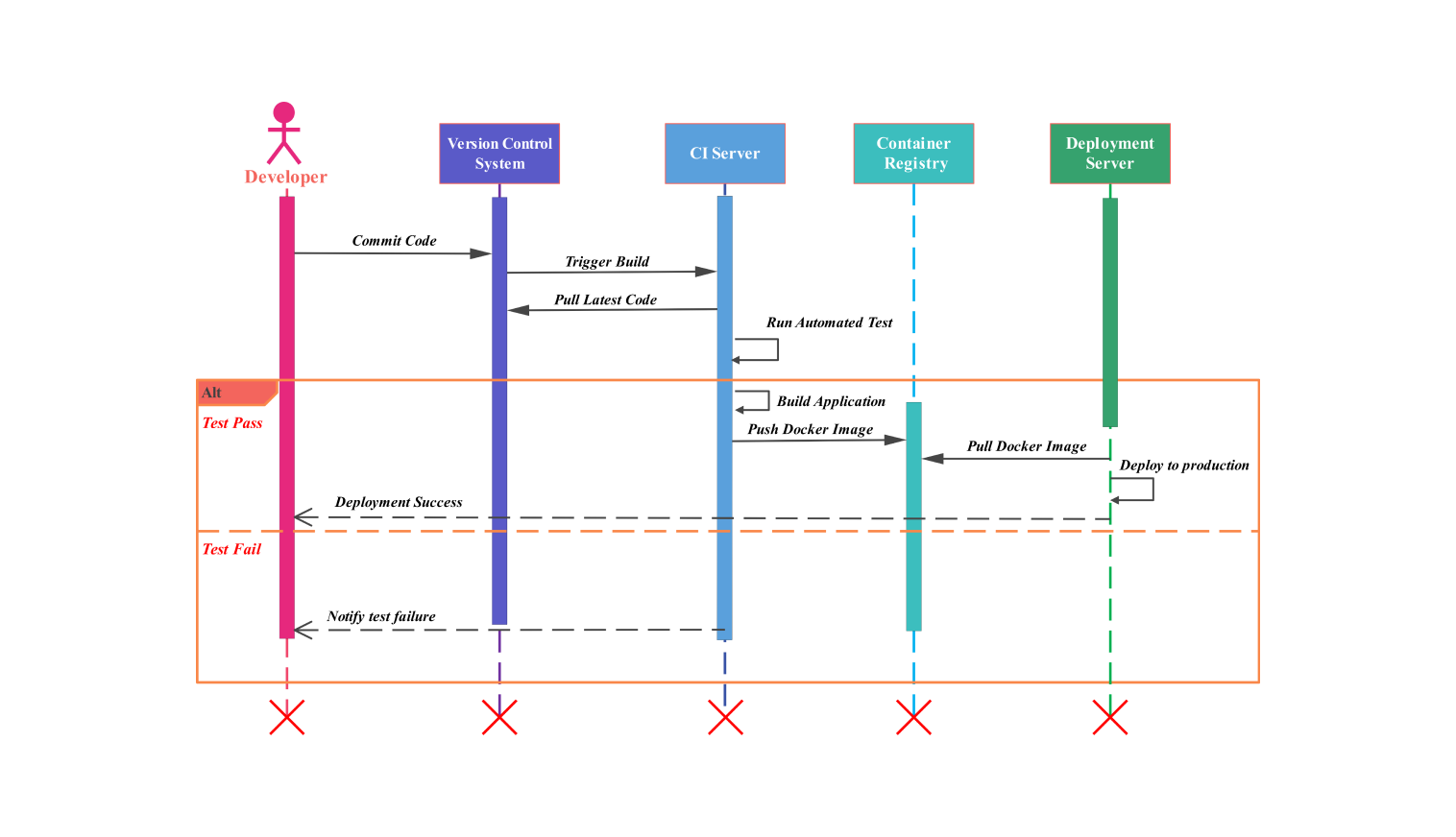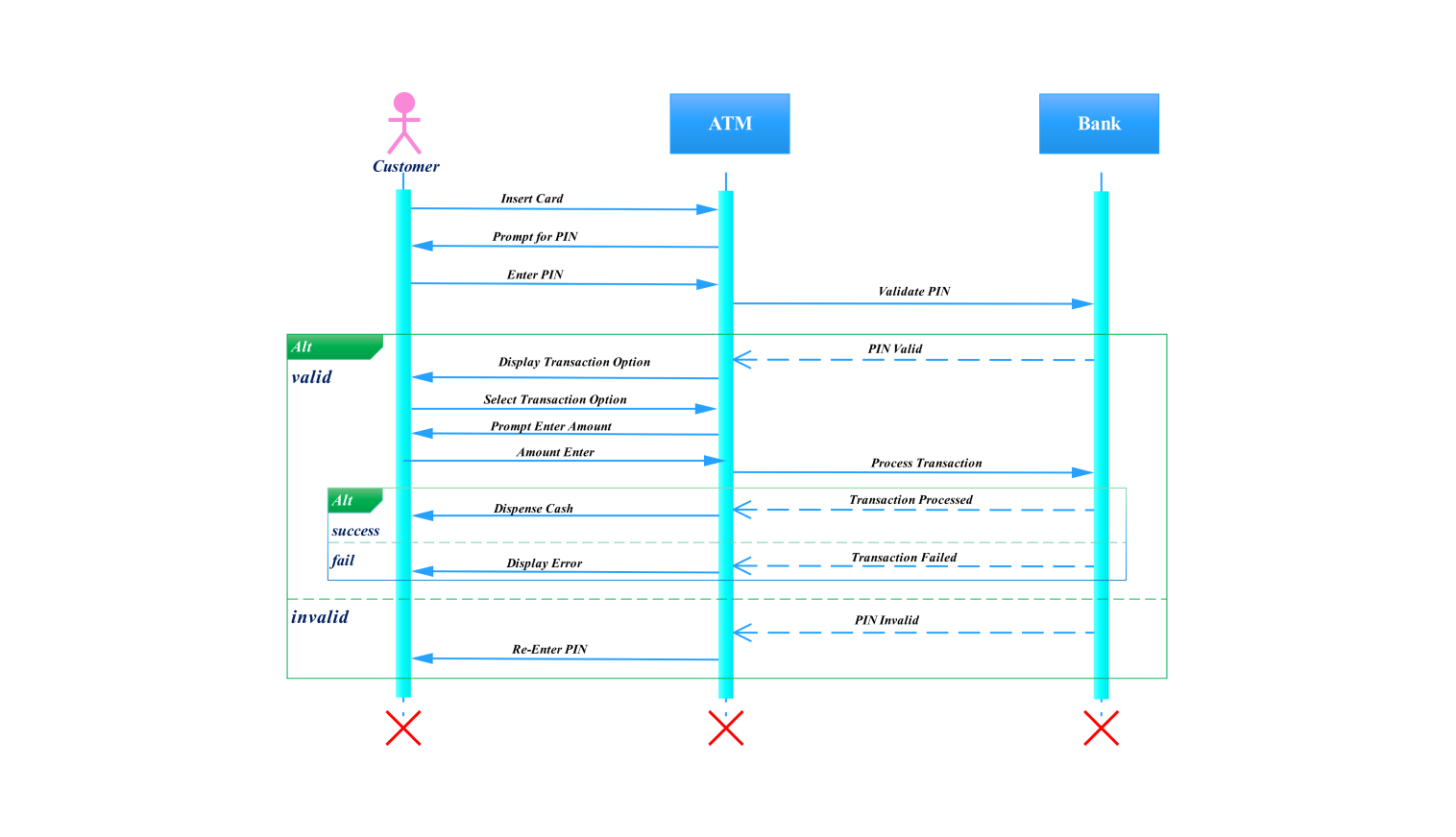- All templates
- Sequence diagram templates
- Sequence diagram client-server communication
About this sequence diagram for client-server communication
The UML sequence diagram for client-server communication shows a secure data-fetching method. The process initiates when the client sends an authentication request to the server. This request is very important. It helps verify the client's identity before accessing any data.
The server accepts the credentials and tries to match them to the database within its limits. If the credentials are valid, the server replies with, "credentials valid." The client can then proceed to the next step.
Once the client's request is verified, they request specific data from the server. The database searches for this data in its database and if it exists, it relays it back to the server. At this point, the server also sends this data to the user which has completed the data request procedure.
If the requested data is not available, the database will reply with a "data not found" message. The server will then send a message to the client. The other way and oriented line in the sequence diagram aimed to explain the loss of the requested data. It helps the client understand and reduces frustration.
First, if the authentication fails, the server sends a notification. It says "invalid credentials." This means the client's credentials do not match the databases. Then, the client is sent an ‘authentication failure’ notification and ends the sequence. This control ensures that the system authenticates all allowed users before they start. It prevents data loss and compromise.
The UML sequence diagram for client-server communication captures every step in accessing the server's data. It also shows key actions, like checking credentials, requesting data, and handling errors. This design lets the server handle all situations. It covers successful data returns, messages that data is unavailable, and failed authentications. The client will always get the needed response.
This design protects the data better. It also enhances the presentation's usability. It gives each result in an organized form. The structured approach to client-server co enhances the overall system's robustness and reliability. The sequence diagram shows how the server processes client requests. It validates each step to ensure secure data access and reduces errors.
Related templates
Get started with EdrawMax today
Create 210 types of diagrams online for free.
Draw a diagram free Draw a diagram free Draw a diagram free Draw a diagram free Draw a diagram free
